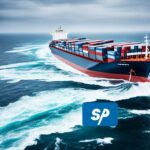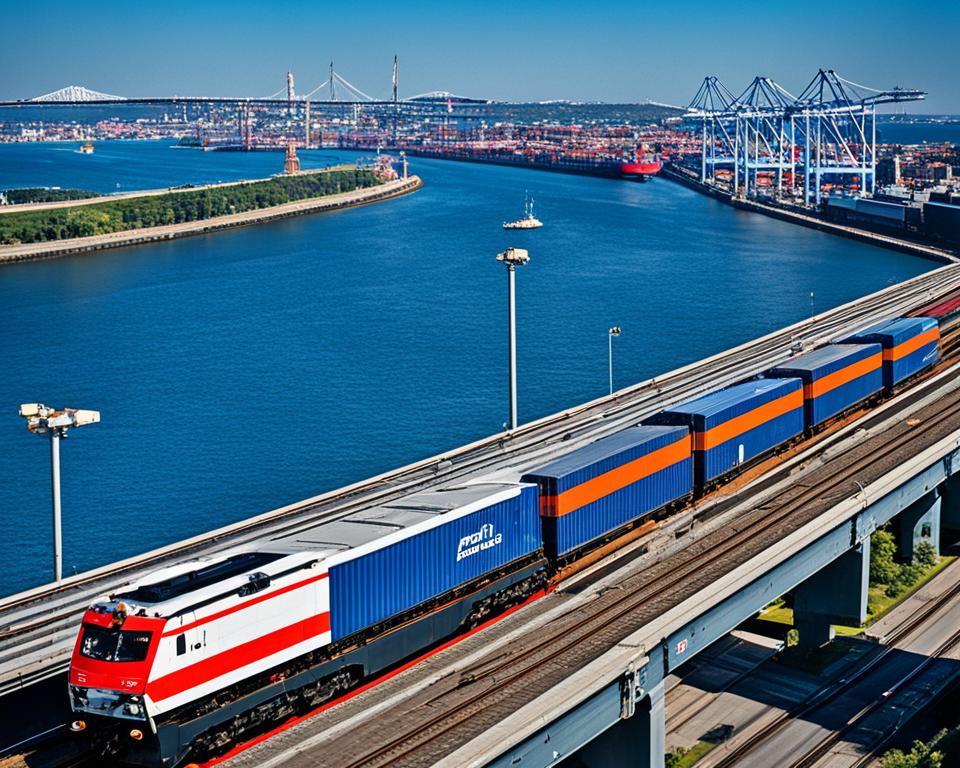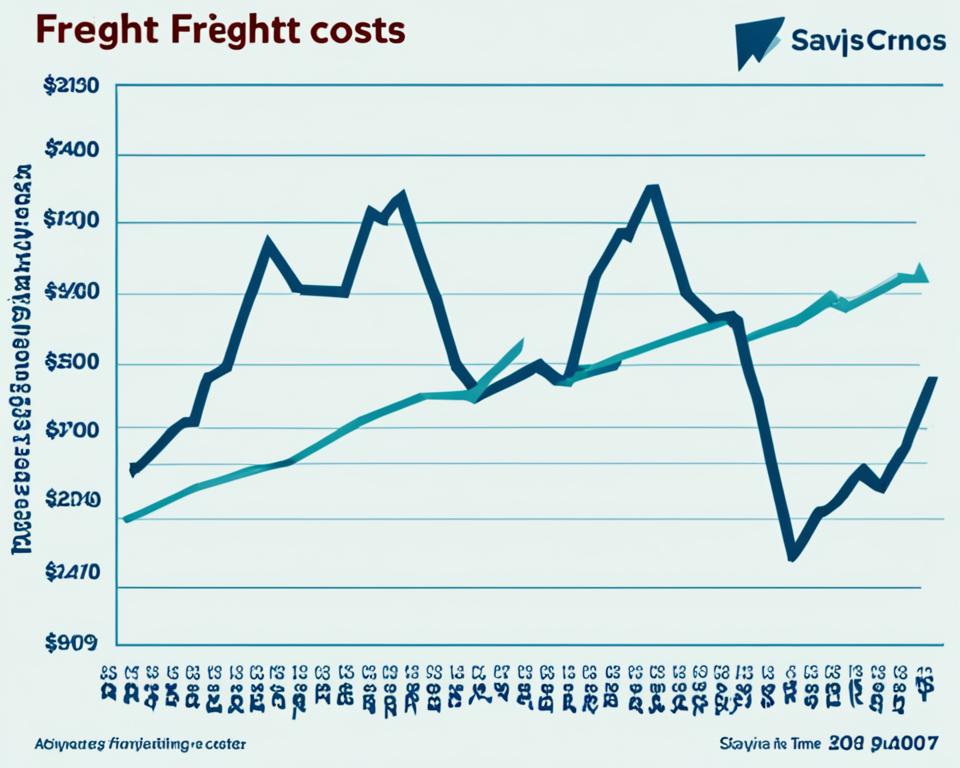Have you ever wondered why some businesses seem to handle logistics smoothly while others face challenges? In today’s fast market, how you manage transportation can set you apart. SAP TM is a key solution designed to make logistics and freight operations better. It helps businesses like mine manage transportation more efficiently.
Logistics software does more than just make things run smoothly. It can also save money and make customers happier. With SAP TM, I can improve how I manage freight and use analytics to see my operations clearly. This system changes the game, showing how crucial it is for businesses to keep up with logistics changes.
Let’s see how SAP TM can boost your transportation processes and improve your operations. For more on how cloud-based solutions can enhance procurement, check out this informative article.
Key Takeaways
- SAP TM optimizes logistics and freight operations for businesses.
- Effective transportation management enhances efficiency and reduces costs.
- Leveraging logistics software improves freight management practices.
- Transportation analytics provide critical insights into operations.
- Staying competitive requires adapting to evolving logistics demands.
Understanding Transportation Management Systems
Transportation Management Systems (TMS) are key to making logistics more efficient. They help streamline logistics and manage complex supply chains. Companies use TMS to plan better routes, improve load planning, and serve customers better. Knowing how TMS work is crucial for boosting logistical performance.
Overview of Transportation Management Systems (TMS)
A TMS helps companies manage their transportation better. It automates tasks and gives real-time data for better decisions on shipments. The main tasks of TMS are:
- Route Optimization: Finds the best routes to cut costs and speed up deliveries.
- Load Planning: Makes sure shipments are cost-effective by using space well.
- Carrier Selection: Helps pick the best carriers for service, cost, and reliability.
- Real-Time Tracking: Gives updates on shipments, making customers happier.
Using TMS can greatly improve logistics and give a competitive edge. Technology lets companies manage their transport better and tackle challenges quickly.
| Feature | Description | Benefits |
|---|---|---|
| Route Optimization | Finds the shortest and most efficient routes for deliveries. | Reduces fuel costs and delivery times. |
| Load Planning | Maximizes the use of transport vehicles by optimizing load. | Increases profitability by reducing empty miles. |
| Carrier Management | Facilitates effective communication with carriers and monitors performance. | Improves service levels and reduces operational risks. |
| Data Reporting | Generates analytical reports for decision-making. | Enhances strategic planning and investment insights. |
What is SAP TM?
SAP TM is a top-notch logistics software that makes managing transportation better. It’s more than just a tool; it’s a strong system designed to make logistics easier. It helps with things like getting goods, sending them out, and keeping track of them in the supply chain. This makes it easier for businesses to handle complex logistics issues.
Core Functions of SAP TM
This software has features that set it apart from old ways of doing things. Key functions include:
- Freight Procurement: Helps companies pick the best carriers to save money.
- Shipment Execution: Manages and tracks shipments from start to finish.
- Visibility: Gives real-time updates on transportation, helping make quick decisions.
- Seamless Integration: Works well with other SAP solutions, boosting supply chain performance.
Studies show SAP TM beats traditional logistics in efficiency and customer happiness. Users also say it has changed how they handle transportation for the better.
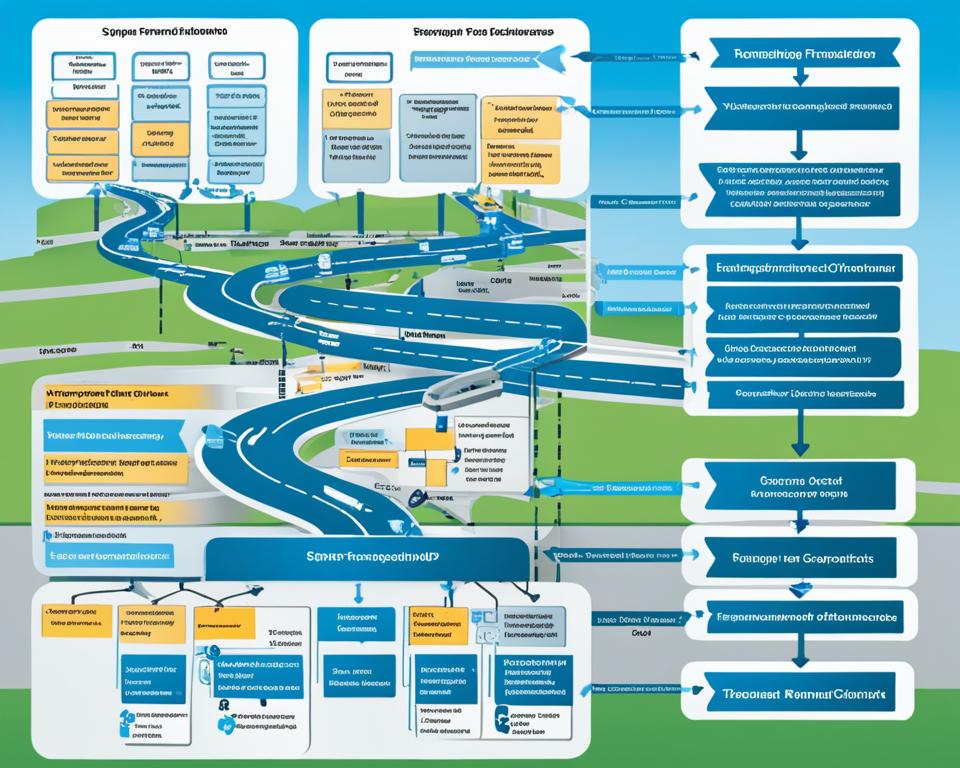
| Function | Description | Benefits |
|---|---|---|
| Freight Procurement | Selecting carriers based on cost and efficiency | Reduced transportation costs and improved carrier performance |
| Shipment Execution | Managing the shipment process from start to finish | Streamlined operations and timely deliveries |
| Visibility | Real-time tracking of shipments | Enhanced decision-making and increased transparency |
| Seamless Integration | Collaboration with other SAP solutions | Holistic view of the supply chain and improved data accuracy |
The Importance of Logistics Software in Today’s Business
In today’s fast-paced market, using logistics software is key for businesses aiming to improve their operations. This tech helps companies meet customer needs better and keep costs down. By using modern logistics software, businesses can make their supply chain more efficient. Here are some reasons why this software is vital in today’s competitive world.
Benefits of Modern Logistics Software
Modern logistics software brings many benefits for today’s businesses. Here are some main advantages:
- Cost Reduction: It makes processes more efficient, cutting down on costs. This lets businesses use their resources better.
- Improved Delivery Times: Better tracking systems help with scheduling and speed up deliveries. This makes customers happier.
- Enhanced Visibility: It makes the supply chain more transparent. This lets businesses spot and fix problems early.
- Data-Driven Insights: Advanced analytics give insights that help with making decisions and planning strategies.
| Benefit | Description | Impact on Business Efficiency |
|---|---|---|
| Cost Reduction | Streamlining operations to decrease costs associated with logistics. | Higher profitability |
| Improved Delivery Times | Faster processing and shipment of products. | Increased customer retention |
| Enhanced Visibility | Real-time tracking of inventory and shipments. | More agile response to market changes |
| Data-Driven Insights | Utilizing analytics for better strategies and decision-making. | Improved competitiveness |
Using logistics software makes supply chain operations smoother, boosting business efficiency. This tech is a key factor for success in today’s fast-changing market.
Key Features of SAP TM
SAP TM offers a wide range of tools to improve freight management. These SAP TM features are key to making transportation logistics more efficient and effective. They include real-time shipment tracking, which lets businesses keep an eye on their logistics easily.
Advanced Functionalities
SAP TM focuses on making operations better. It brings together advanced tools that give businesses a clear view of their supply chain. This helps them make smart choices. Key features include:
- Freight Management: Plan and carry out transportation strategies to cut costs and boost service quality.
- Shipment Tracking: Keep track of shipments in real-time, giving everyone the latest news on their deliveries.
- Advanced Analytics: Use data to make logistics better and improve how things run.
Real examples show how well these features work. Companies using SAP TM have seen big improvements in their logistics. For more on how to make procurement better, check out the SAP Ariba Modules. They offer insights on how to solve operational challenges with integrated solutions.
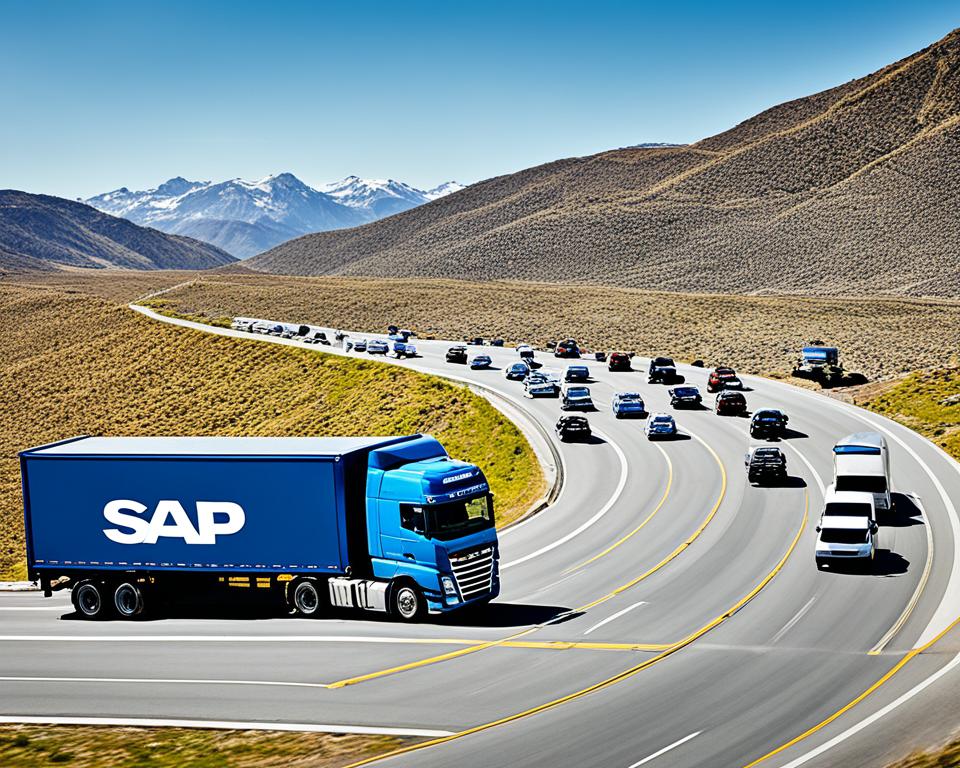
In conclusion, using key SAP TM features boosts freight management a lot. Features like shipment tracking and analytics make logistics smoother. This leads to better results for businesses.
Enhancing Freight Management with SAP TM
In today’s fast-paced world, managing freight well is key to success. SAP TM solutions offer powerful tools to make operations smoother and more efficient. They automate important tasks, helping companies reach new heights in logistics.
These solutions give businesses the tools to plan loads better, track shipments, and make sure deliveries are on time. This makes managing freight easier and more reliable.
Strategies for Effective Freight Management
Using smart strategies can boost the benefits of SAP TM solutions. Here are some tips:
- Automated Selection Processes: Choosing carriers based on cost, performance, and availability makes deliveries faster and cheaper.
- Performance Monitoring: Keeping an eye on shipment performance helps spot problems early and avoid delays, making things more reliable.
- Load Optimization: Using space in freight containers wisely cuts down on waste and lowers costs.
Adding data from logistics best practices can make these strategies even better. By looking at operational data, companies can keep improving their logistics. This keeps them ahead of the competition and makes customers happier. For more help, insights from platforms like Ariba Supplier Collaboration help improve how companies work with suppliers, making logistics better.
SAP TM and Shipment Tracking
In today’s fast-paced business world, shipment tracking is key to better logistics management. SAP TM helps organizations keep a close eye on their shipments. It’s crucial for cutting down on delays, keeping things safe, and giving great customer service.
Importance of Real-Time Visibility
Real-time visibility in SAP TM changes how logistics works. It lets companies watch their cargo closely. This way, they can quickly fix any problems. Here’s why real-time tracking is so important:
- Timely updates on shipment status keep everyone in the loop and help with planning.
- Enhanced safety steps cut down the chance of theft or losing goods on the way.
- Customer satisfaction goes up as people get the right info on when their items will arrive.
- Operational efficiency gets better, letting resources be used where they’re needed most based on tracking info.
Studies back up the value of tracking in logistics. Companies using real-time tracking see big cuts in costs, sometimes by up to 20%. This shows how SAP TM and its tracking tools can boost your logistics.
![]()
| Benefit | Impact on Logistics Management |
|---|---|
| Timely Updates | Improves planning and resource allocation. |
| Enhanced Safety | Reduces risk of loss and damage. |
| Customer Satisfaction | Increases loyalty and repeat business. |
| Operational Efficiency | Lower costs and streamlined processes. |
Effective Route Optimization Strategies
I’ve seen how route optimization can change the game in transportation planning and logistics. By using advanced tech in SAP TM, companies can make their routes better. This leads to saving money and improving how they serve customers. Real-time data helps make smart choices to cut down on travel time and costs.
Today, using tech for route planning is key. Here are some ways to make routes better:
Technology-Driven Route Planning
- Data-Driven Insights: Using past data to predict demand and plan routes better.
- Real-Time Location Tracking: GPS tech gives live updates on traffic and delivery status.
- Dynamic Route Adjustment: Routes change as conditions do to keep things running smoothly.
- Optimization Algorithms: Algorithms find the best paths, considering different factors.
- Collaboration Tools: Tools help drivers, planners, and customers work together better.
These strategies make planning and logistics more efficient. Companies using them get faster deliveries and save money. This helps them stay ahead in the game.
| Strategy | Description | Benefits |
|---|---|---|
| Data-Driven Insights | Uses past data for choosing routes | More accurate planning |
| Real-Time Location Tracking | Updates delivery status live | Happy customers |
| Dynamic Route Adjustment | Changes routes as conditions change | Less waiting time |
| Optimization Algorithms | Finds the best paths | Saves on fuel costs |
| Collaboration Tools | Improves team communication | Less mistakes and better coordination |
Carrier Integration with SAP TM
Effective carrier integration is key in today’s fast-paced logistics world. SAP TM helps companies work better with shippers and carriers. This makes operations smoother and saves a lot of money. It’s all about how these systems work together to improve logistics.
Benefits of Carrier Collaboration
Working with carriers in SAP TM brings many advantages:
- It makes sure everyone in the supply chain shares info right away.
- It helps plan better routes and schedules, saving money on transport.
- It makes it easier to keep track of shipments and fix problems fast.
- It leads to better service and stronger bonds with customers and partners.
Experts say working together in the supply chain is crucial for success. Sharing knowledge and best practices boosts performance and competitiveness. Many companies use tools like SAP Ariba to improve buying and drive change. These tools are key in today’s quick-moving market, showing the value of a unified approach to logistics management.
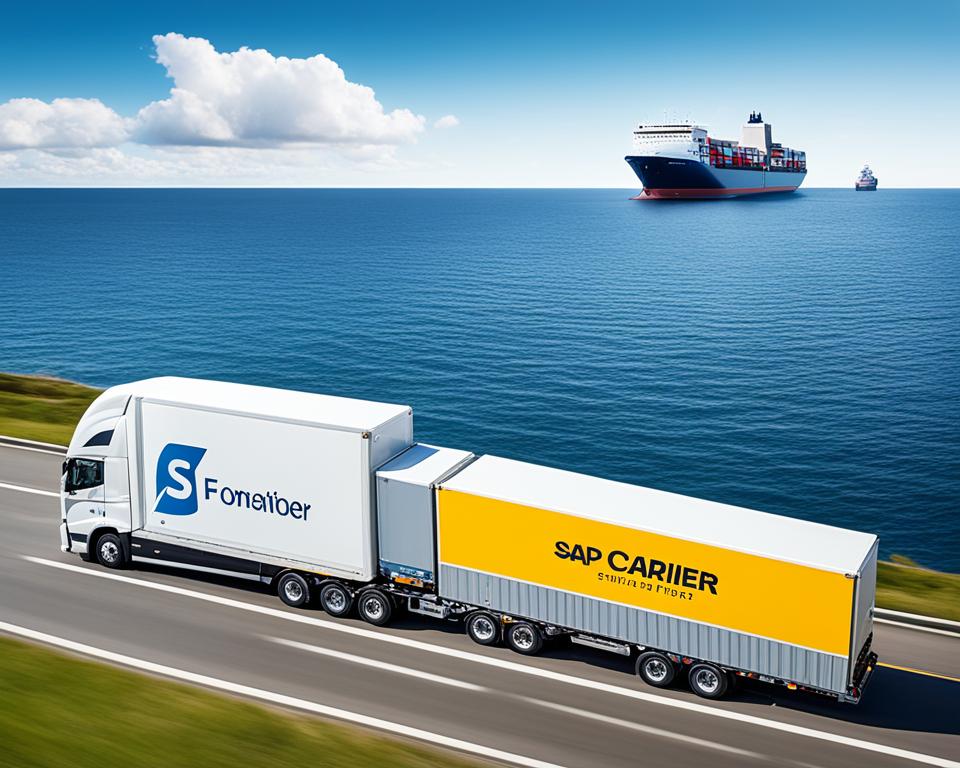
Transportation Planning Made Simple
Planning transportation is key for logistics success. SAP TM tools make this easier with their user-friendly interfaces and special features. These tools help me forecast demand and use resources wisely. They also help me make smart budget choices.
Tools for Effective Transportation Planning
SAP TM has many tools for better transportation planning. Here are some important ones:
- Demand Forecasting: Tools use past data to predict demand accurately.
- Resource Allocation: Smart algorithms help assign assets to tasks efficiently.
- Budget Planning: Tools let me adjust budgets in real-time as data changes.
- User Experience Feedback: Improvements come from feedback, keeping tools up-to-date and useful.
Transportation Execution: How SAP TM Enhances Efficiency
In today’s fast-paced logistics world, transportation execution is key. SAP TM is vital for making transportation processes more efficient. It uses advanced tools like load optimization and real-time tracking. This leads to better logistics and fewer mistakes, which helps businesses a lot.
Streamlining Transportation Execution Processes
SAP TM makes transportation smoother with its many features. These include:
- Load Optimization: Combining shipments to use space better and cut costs.
- Real-Time Tracking: Giving updates on shipments right away for better visibility and quick action.
- Automated Processing: Cutting down on manual mistakes and making things faster.
- Collaboration Tools: Helping teams talk better with each other to improve service.
Companies using SAP TM see big improvements in how well they work. They cut down on transportation costs and get things done faster. This is thanks to better decision-making and using resources wisely. By using SAP ERP with the Ariba Network, they can make their procurement even better.
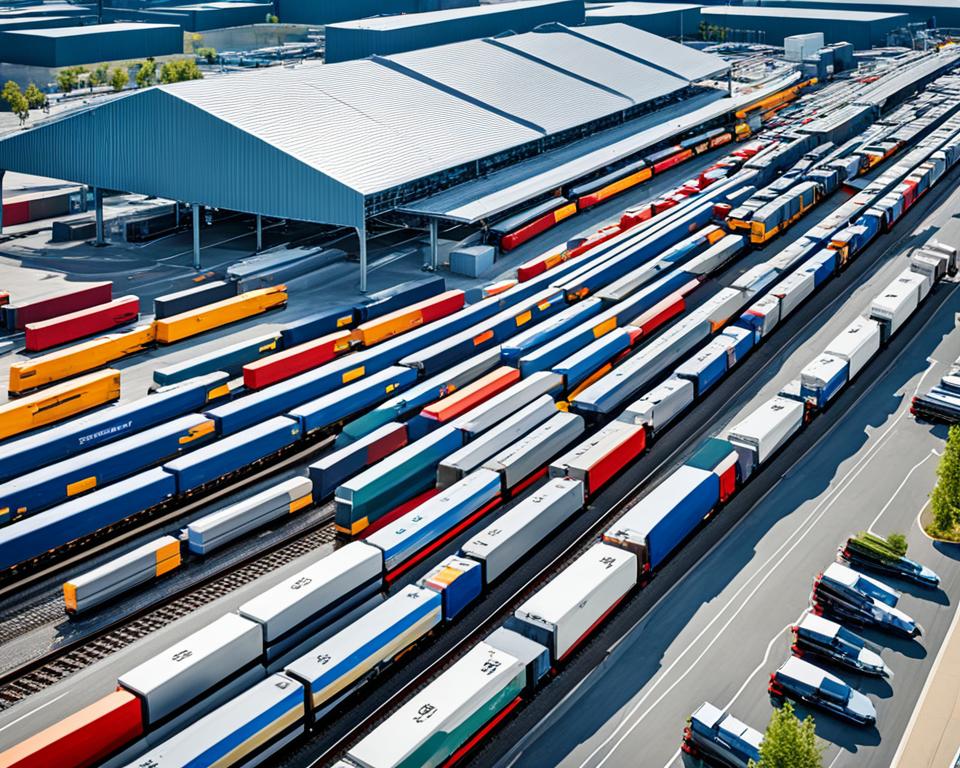
SAP TM tackles the challenges of modern logistics with its new features. It helps businesses stay ahead by making things more efficient and optimizing logistics.
Leveraging Transportation Analytics for Better Decision Making
Transportation analytics is key to making operations more efficient and improving customer service in logistics. By using analytics, companies can make smarter decisions. This helps them stay ahead in a fast-changing market. With detailed insights, companies understand their supply chains better. This lets them tackle challenges and grab new opportunities.
Importance of Data-Driven Decisions
Using data to make decisions helps use resources better and improves forecasting. Analytics helps spot trends, leading to better planning. It’s crucial to look at different parts of logistics, like:
- Improving route efficiency
- Reducing operational costs
- Enhancing customer satisfaction
These insights can greatly benefit a company’s profits. Data from transportation operations affects key areas like inventory, tracking shipments, and supply chain performance.
With transportation analytics, companies see better decision-making. Analyzing real-time data encourages ongoing improvement and sustainable growth in logistics.
| Key Benefit | Description |
|---|---|
| Resource Optimization | Analytics help allocate resources better, saving costs. |
| Improved Forecasting | Accurate analysis makes forecasting more reliable, reducing supply chain issues. |
| Enhanced Customer Experience | Real-time insights mean timely updates, making customers happier. |
| Strategic Planning | Data guides long-term planning and managing risks. |
Challenges in Transportation Management and SAP TM Solutions
Running a transportation operation comes with many hurdles. These include changing costs, new rules, and supply chain problems. These issues can slow down work and make planning harder. But, SAP TM solutions have tools to help. They make processes smoother and improve how things work.
Overcoming Common Transportation Challenges
Knowing the main problems in logistics helps companies plan ahead. Some big challenges are:
- Fluctuating Fuel Costs: These can really affect budgets and profits.
- Compliance Regulations: Following transport laws is key to avoid fines.
- Container Shortages: When there’s not enough containers, shipments get delayed and logistics gets harder.
SAP TM solutions help by giving clear views and data analysis. This helps make better choices. For example, using real-time data lets companies spot and fix problems early. Many companies have used SAP TM and seen big wins in managing costs, following rules, and being reliable.
Case Studies: Successful Implementations of SAP TM
Real-world examples show how SAP TM helps businesses improve their transportation management. These case studies cover various industries, showing how SAP TM works well in different settings.
Industry Use Cases
Companies from many sectors use SAP TM to solve their transportation issues. This part shares success stories from logistics, focusing on the gains from using SAP TM wisely.
| Industry | Company | Challenges Faced | SAP TM Benefits |
|---|---|---|---|
| Retail | Walmart | High shipping costs and inefficient routing | Reduced costs by 15% with optimized route planning |
| Automotive | Toyota | Complex supply chain and delayed deliveries | Enhanced visibility leading to 20% faster delivery times |
| Manufacturing | Coca-Cola | Inaccurate freight predictions | Improved accuracy of shipping forecasts by 30% |
| Pharmaceutical | Pfizer | Regulatory compliance and tracking challenges | Achieved full compliance with audit trails and tracking |
The Future of Transportation Management with SAP TM
The world of transportation management is changing fast, thanks to new trends in the logistics industry. SAP TM is at the forefront, leading the way with its innovations. These changes are making operations more efficient.
Technologies like artificial intelligence and machine learning are changing the game. They help make smarter choices and automate processes. This is set to transform the future of transportation.
Trends Shaping the Logistics Industry
Looking into the logistics trends for SAP TM, we see several key areas:
- Artificial Intelligence and Machine Learning: These technologies improve predictive analytics. They help businesses predict demand and optimize routes.
- Sustainability Initiatives: Companies are now focusing on cutting their carbon footprint with green transportation solutions.
- Real-Time Data Integration: IoT devices bring visibility and control to supply chain operations.
- Blockchain Technology: This ensures transactions are transparent and secure, building trust among stakeholders.
By adopting these innovations, businesses can enhance their logistics and stay ahead in a fast-changing market. The future of transportation management depends on adapting and using these technologies. SAP TM is leading the way, helping companies meet future challenges.
Comparison with Other Transportation Management Systems
When looking at SAP TM, it’s key to compare it with its competitors. This shows how each system works, how flexible it is, and how well it does its job. I’ll highlight what SAP TM does well and what it could improve on. This will help us see where it fits in the market.
SAP TM vs. Competitors
Choosing a transportation management system means knowing the differences between SAP TM and others. Here’s a table that compares SAP TM with other top logistics software.
| Feature | SAP TM | Competitor A | Competitor B |
|---|---|---|---|
| Integration Capabilities | Extensive integration with other SAP modules | Good integration with major ERPs | Limited integration options |
| User Interface | Highly intuitive and customizable | Moderately user-friendly | Less intuitive with a steeper learning curve |
| Analytics Features | Advanced analytics with real-time data | Basic analytics available | Standard analytics reporting |
| Pricing Structure | Premium pricing reflective of advanced features | Competitive pricing | Lower-cost solution |
This comparison shows that SAP TM has strong points like great features and good integration. But, users should think about their needs and budget. SAP TM’s advanced analytics and easy-to-use interface are big pluses. Yet, some competitors might offer good solutions at a lower cost.
Tips for Implementing SAP TM in Your Business
Implementing SAP TM is more than just installing software. It needs a strategic plan that fits your company’s needs. Here are key SAP TM implementation tips that follow logistics best practices for a smooth deployment.
Best Practices for Implementation
It’s vital to link your business goals with SAP TM’s features. This ensures the system meets your needs and supports your future plans.
- Engage Stakeholders Early: Bring in important people from different departments early. This builds support and lowers resistance to change.
- Comprehensive Training: Offer detailed training for your team. A well-trained team is key to using the system’s full potential.
- Data Quality Management: Make sure the data in SAP TM is correct and full. Bad data can cause big problems after you start using it.
- Maintain Open Communication: Keeping everyone updated and listening to their concerns is crucial during implementation.
- Incremental Rollouts: Think about rolling out SAP TM step by step. Starting with one area lets you make changes before going all in.
Adding logistics best practices to your SAP TM setup makes it work better. By following these tips, your organization can make the most out of SAP TM.
| Best Practice | Description |
|---|---|
| Stakeholder Engagement | Get key people involved from the beginning for better support and teamwork. |
| Comprehensive Training | Provide training that fits different roles for using SAP TM well. |
| Data Quality Management | Use data cleaning before moving it to the TM system. |
| Open Communication | Have regular meetings and updates during the setup process. |
| Incremental Rollouts | Start using the system step by step to reduce disruptions and make adjustments. |
Conclusion
In this SAP TM summary, we’ve looked at how this system changes logistics for the better. It helps with managing freight, working with carriers, and tracking shipments in real-time. SAP TM is key for businesses wanting to stay ahead in a fast-changing market.
This article shows why using modern tools like SAP TM is a must. It makes transportation smoother and helps with making better decisions by using strong analytics. With technology and data leading the way, using systems like SAP TM is crucial for managing transport.
When planning for the future of your logistics, think about the big benefits SAP TM can bring to your company. Adding this tool could be a game-changer for your transport strategy, leading to better results and a stronger market position. The path to better logistics is just starting, and SAP TM is here to lead the way.
FAQ
What is SAP TM?
SAP TM is a software for managing logistics. It helps with tracking shipments, optimizing routes, and analyzing transportation data. This makes logistics more efficient.
How does SAP TM improve transportation planning?
SAP TM helps with planning by forecasting demand and allocating resources. It also analyzes data for better decisions. This leads to smarter logistics strategies and lower costs.
What are the key features of SAP TM?
SAP TM has features like managing freight, tracking shipments, and working with carriers. It also includes executing transportation and using analytics for smart decisions. These help streamline logistics and improve service.
Why is real-time visibility important in logistics?
Real-time visibility is key for logistics because it lets businesses track shipments and respond quickly to delays. SAP TM’s tracking feature gives this visibility, which is vital for good logistics.
How does SAP TM facilitate carrier integration?
SAP TM makes working with carriers smoother by improving communication and efficiency. This leads to lower costs and better delivery times.
What role does transportation analytics play in logistics management?
Analytics are crucial in logistics by offering insights into how things are running. SAP TM uses data analytics to spot trends and improve processes. This helps make smarter decisions for better efficiency.
Can SAP TM help with route optimization?
Yes, SAP TM has tools for finding the best delivery routes. This cuts down on costs and speeds up deliveries, making logistics better.
What challenges can SAP TM help overcome in transportation management?
SAP TM tackles issues like changing costs, following rules, and inefficient processes. It offers solutions for better planning and doing transportation tasks well.



